We have spent the last few days exploring Rio Guadiana, with Portugal to the West and Spain to the East, different time zones, marinas and castles, different foods, different SIM cards, and one bridge to navigate under. We had heard that travel up the river was scenic and that the towns 20 miles upstream were worth exploring.
Travel to and on Rio Guadiana involves tidal and current "gates", shades of sailing in the UK. In order to follow the piloting guide directive "Do not attempt to enter the mouth of Rio Guadiana other than at half flood or above" we broke up travel into two days. First day the plan was to anchor in Tavira, 50 miles away from Lagos, and with its own tidal gate to enter the river mouth. So, we dropped our dock lines in Lagos at 3:45am and got to the mouth of Rio Gilao a little before noon, anchoring behind a barrier island downriver from the town of Tavira.

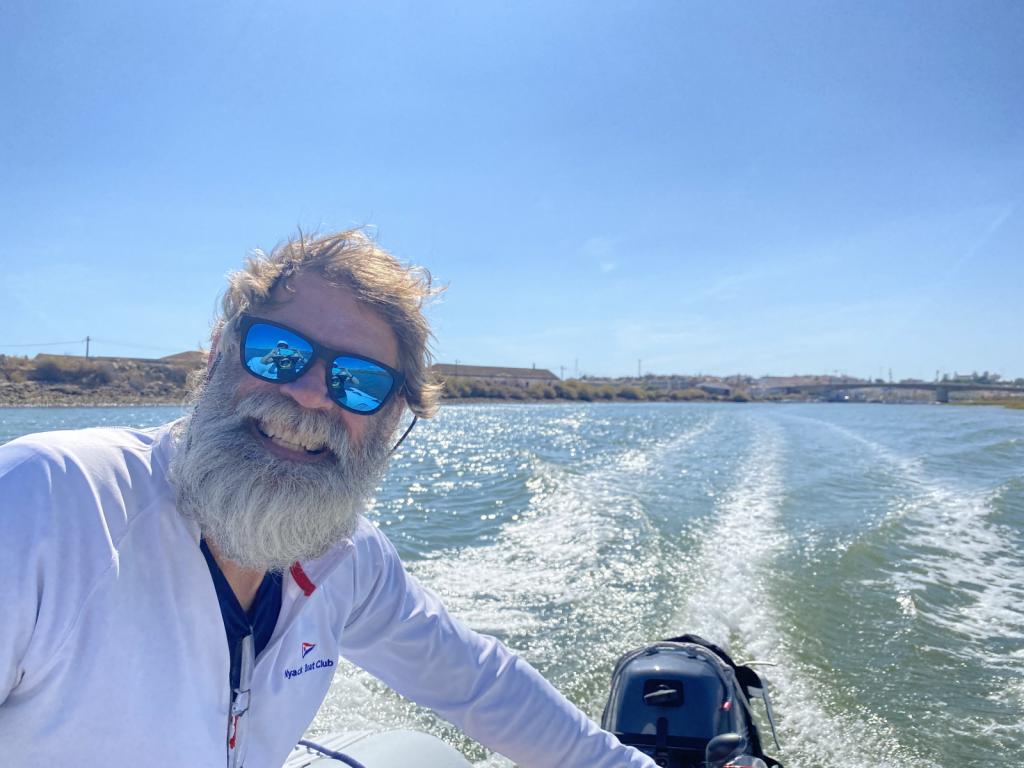
We dinghied a couple of miles to the town. Part of the fun of our travel is figuring out little things, like where can leave our dinghy. Clearly, the town of Tavira is not used to tourists taking dinghies upriver to visit as there was no obvious dock for us to "park". We got the attention of a water taxi driver and signed our question - he is turn signed his response in a friendly and welcoming manner. So we left our dinghy as directed (we hoped) tied up under the ramp used by the ferry and explored the town.
We had tried to call our next marina, Vila Real do Santo Antonio, but were unable to communicate with the person who answered. We heard "bla bla internet bla bla" and had tried to email but had not gotten a response. As we were puzzling over this while eating dinner to us (late lunch in Portugal and Spain), David decided to ask the waiter to make the call. A long conversation ensued with questions to us and we had a reservation!

In order to make the tidal gate at Rio Guadiana we were able to sleep in, leaving our anchorage at 11:00 for the 12 mile trip to the marina on the Portuguese side of the river, also following the directive "be aware that maneuvering there is least traumatic at slack water." Not wanting to create new traumatic memories, we entered Vila Real do Santo Antonio around slack water to avoid the difficult currents that would challenge our developing docking skills (shades of UK, Hamble Point Marina, but without the unfortunate boat-pontoon interaction and repair). We made it in without any scratches, and spent the rest of the day exploring the town
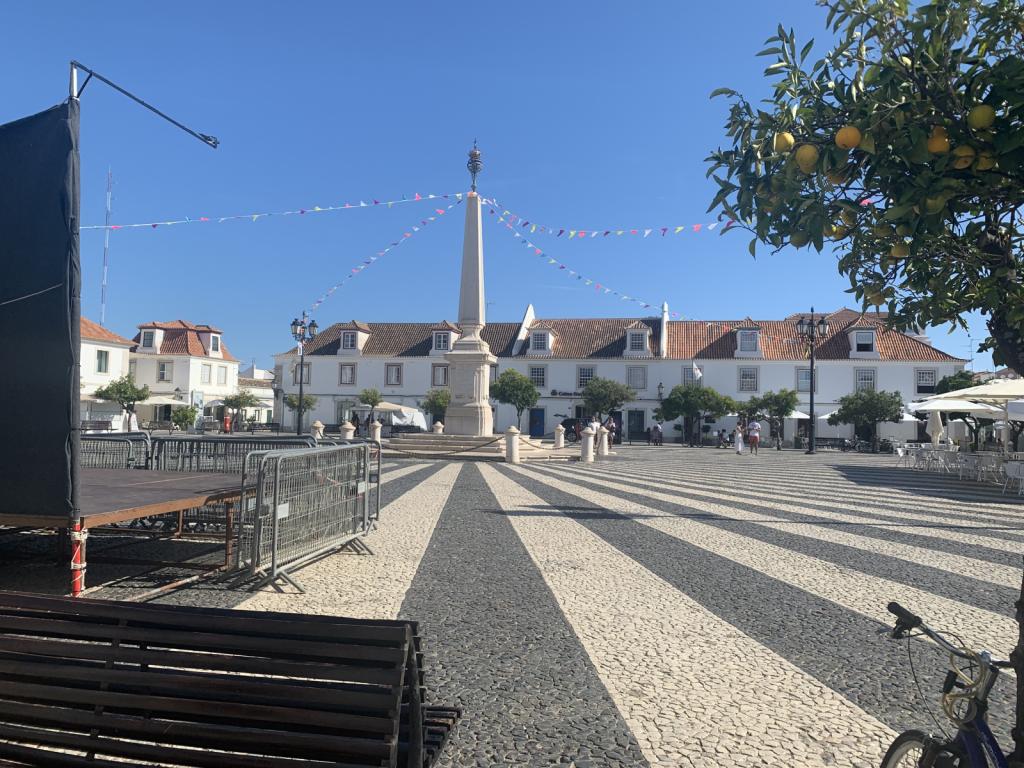

Our next "gate" was going under the suspension bridge a couple of miles north. The chart says that the height from the water to the bottom of the bridge is 18 meters and our "air draft" is 20 meters. However, the 18 meter height is apparently not the typical calculation from highest astronomical tide, so we have been told (and have read) that "20 meter airdraft shouldn't be a problem at low tide". It would have been more comforting to follow one of these mythical people in their 20 meter draft boat, but we decided to go at low water, tiptoeing up backwards so we could make a quick retreat if needed. We left the dock at 6:25am to make it to the river at the right time and were able to get under the bridge with what looked like a foot or 2 to me and a meter or 2 to David to spare, anyway enough so that we could relax and enjoy the two hour trip upriver in the cool of the morning.
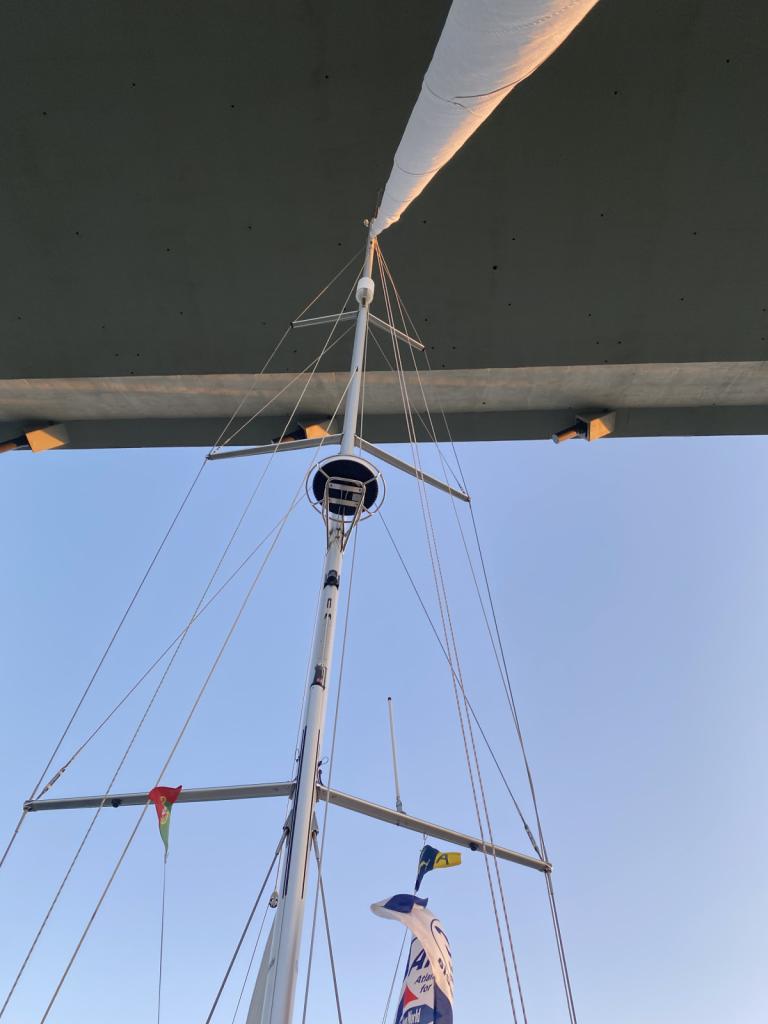
Along the river, we passed white storks, what looked like great blue herons, a few sailboats at anchor that had seen better days, and a couple of very small villages. Around a bend we found the villages of Alcoutim on the Portuguese side and Sanlucar on the Spanish side, each with small pontoons for visiting boats. As the Portuguese side was full, we decided to try to "enter" Spain and occupy the one spot left on their dock. We wondered if we would have a problem as Spain states on their website that you must fill out a health form before entering. No questions - no problems.
After the hottest afternoon and evening of our trip, we got up early the next day and explored the local fort and walked along the river until we were too hot.
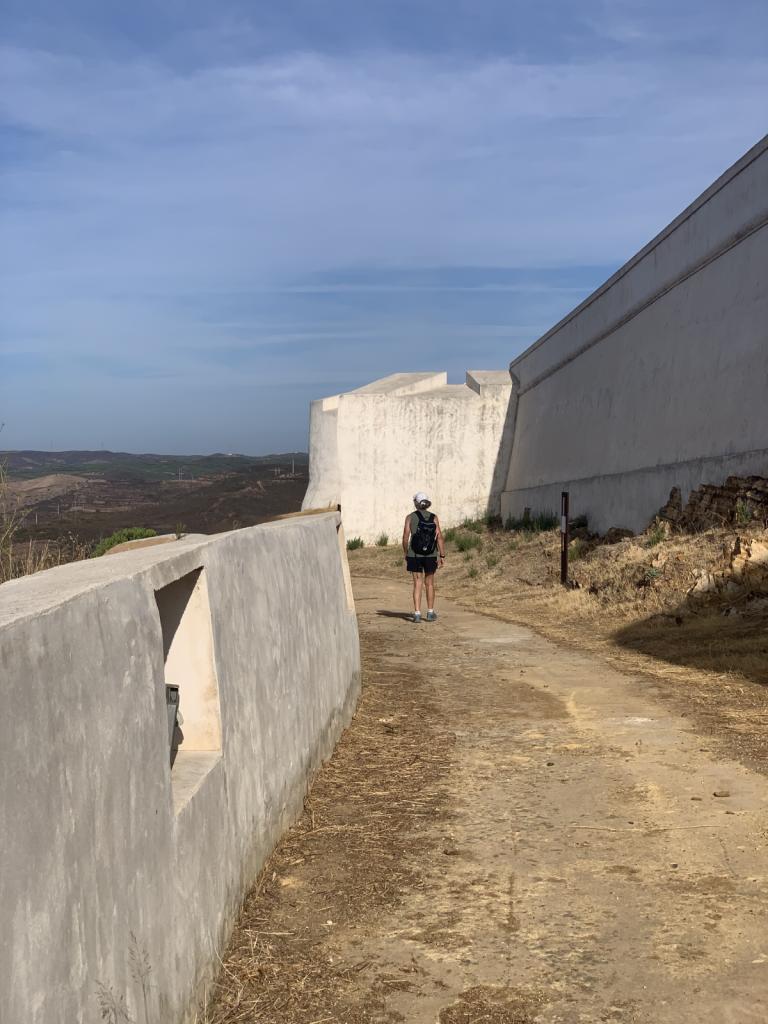
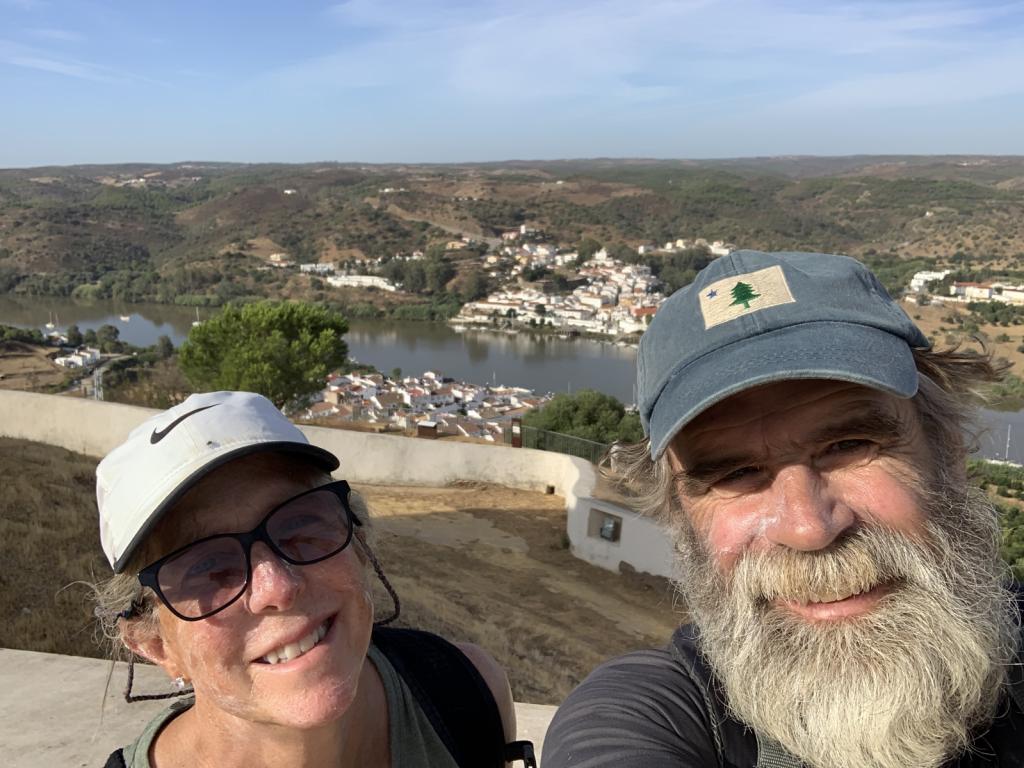
We stopped at one of the only restaurants in town and enjoyed the shade and cool drinks. For lunch, the menu was recited in Spanish. We thought we heard a word something like "salmon" so we ordered this. Two plates of whole, breaded, fried sardines arrived. David declined and I had a few. Oh well, the shade, cool drinks, and bread were excellent.
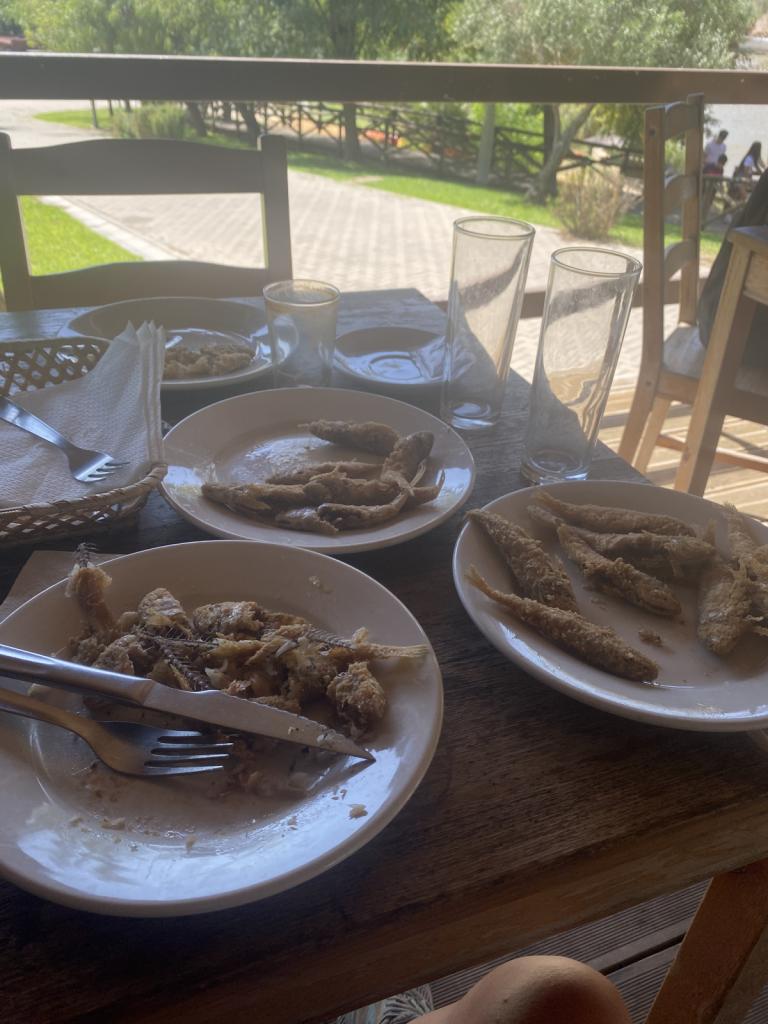
The next morning we were up alittle before dawn to travel downriver and make our way under the suspension bridge at low water. We were relaxed enough to travel forward this time. Since we were already "in" Spain, we decided to try the marina on the Spanish side at the mouth of Rio Guadiana, Ayamonte. No phone call possible since we didn't have a Spanish SIM, and no one spoke English on the VHF as we approached, so we entered, picked a spot, and proceeded to the office. No problem. We docked in our assigned spot and camped out in front of the marina office to use their wifi to figure out where we could get a Spanish SIM. Four hours or so later, we were reconnected. We enjoyed a wonderful dinner of tapas overlooking a plaza with a live band.
Next morning, a very early start to motor (sadly, no wind) the 70 miles to Cadiz. We will spend a few days here exploring the town and then head back to Vilamoura to meet up with our friends, Maggie and Bill.


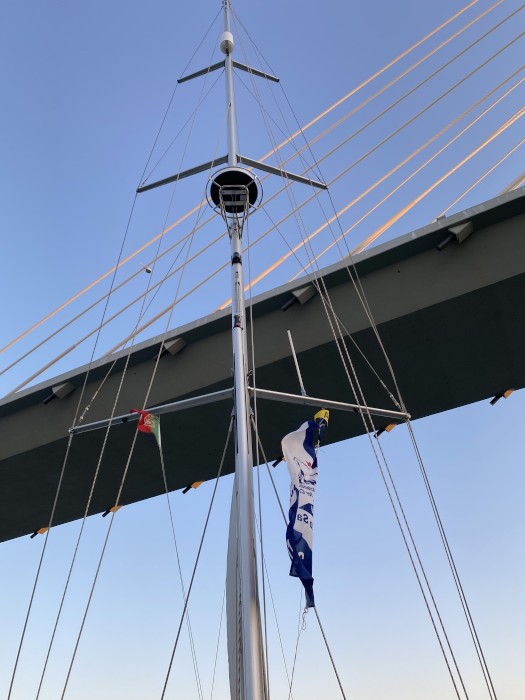

 We dinghied a couple of miles to the town. Part of the fun of our travel is figuring out little things, like where can leave our dinghy. Clearly, the town of Tavira is not used to tourists taking dinghies upriver to visit as there was no obvious dock for us to "park". We got the attention of a water taxi driver and signed our question - he is turn signed his response in a friendly and welcoming manner. So we left our dinghy as directed (we hoped) tied up under the ramp used by the ferry and explored the town.
We dinghied a couple of miles to the town. Part of the fun of our travel is figuring out little things, like where can leave our dinghy. Clearly, the town of Tavira is not used to tourists taking dinghies upriver to visit as there was no obvious dock for us to "park". We got the attention of a water taxi driver and signed our question - he is turn signed his response in a friendly and welcoming manner. So we left our dinghy as directed (we hoped) tied up under the ramp used by the ferry and explored the town. 






Comments